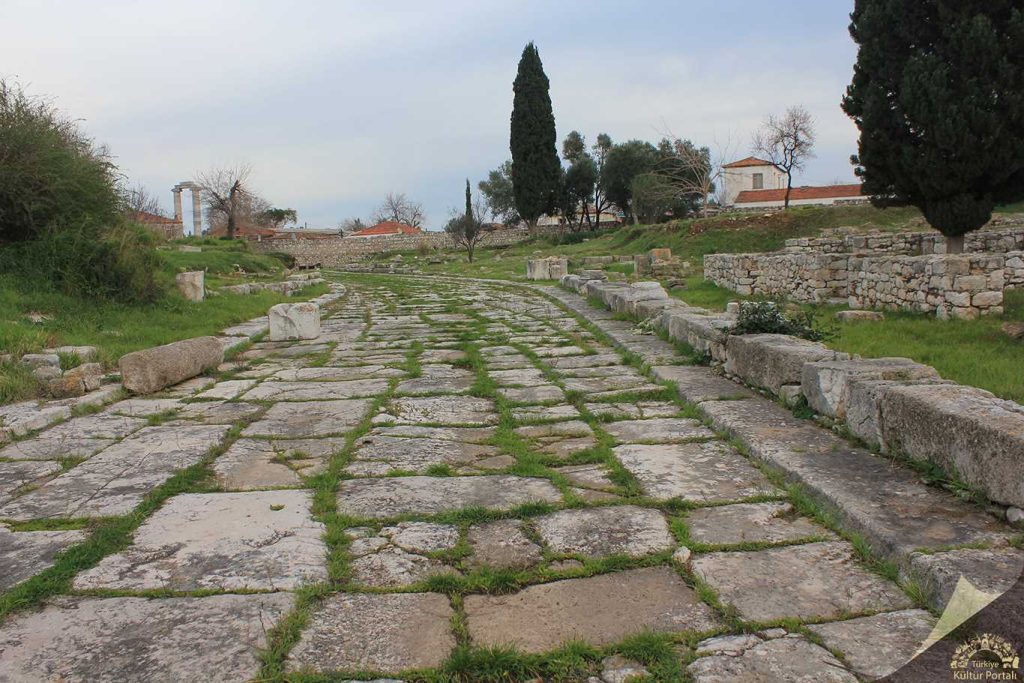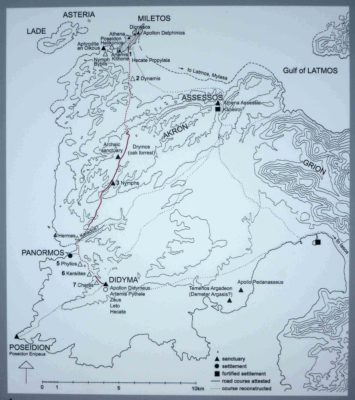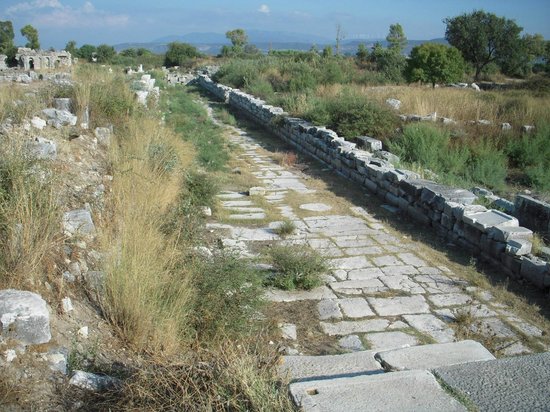With the surprising revelation from the staff at the Miletus Museum, we have ascertained the continued closure of the Sacred Road is, according to them, squarely at the feet of the Director of Excavations, writes Glenn Maffia.
Though, I wasn’t going to accept a singular source, nor one that appeared hesitantly given. It was with no further adieu that I emailed the Director within the week.
I asked her for a response to this accusation, and then waited. And waited, and waited some more. Nothing, absolutely nothing, appeared. No explanation whatsoever.

A genius archaeologist
Naturally, I was disappointed as I hold the Director in high regard. It was she who discovered the theatre to the south of the Temple, and acted on pure intuition and imagination to locate a Byzantine Chapel with a Hellenistic structure beneath the Christian foundations. Most impressive of all, in my eyes, was the discovery of another temple located in the current mosque’s garden and stretching into the old school grounds. These are no small feats.
Last year the Director was searching for an antique Stoa (a covered colonnade) of which intriguing evidence was found within the foundations of the present mosque. This evidence was deduced by knowing that Apollo’s Temple was ‘Ionic’ in its articulation, as too was the recently discovered temple (maybe dedicated to Artemis), though in the foundations were fragments originating from a ‘Doric’ style of architecture. Reason then demands that there must have been another structure in this area.
A quick research of old maps reveals a British expedition to geographically plot this area during the late 18th century and the early 19th century, and there in black and white was illustrated an “Ancient Wall”.
One of these expedition members was a certain Richard Chandler, and it was his diary that the Director was following. I felt ecstatically happy about that as I had chanced upon this book five years earlier.
Looking for another source
Nonetheless, my high estimation of the Director was waning as I awaited a reply. The silence was deafening, but something told me this could not simply be the case. One must know that ‘feeling’ that something is amiss, but cannot pin down precisely what, that was nagging me.
I decided to contact another archaeologist familiar with ancient Didyma. He did recall hearing of some conversation, years ago, about a decision being made whether to open or close the Sacred Road to the public. He remembers hearing it was “pretty complicated”, but cannot recall the details. He also added that it was so long ago that even the Director had probably forgotten the specific reason or reasons.

Therefore, I guess that my hunch is somewhere near correct, but as to this continued silence from the Director, well, I find that bemusing.
I can speculate the Director is not altogether happy in the public domain, for apart from a couple of awkward looking photo shoots for the local Turkish press after the finds of the theatre and the second temple she remains anonymous to the point of invisibility. Not her natural domain, one may say.
Last year in an update on the state of excavations to local tour guides, her more than capable assistant, Aylin Tanrıöver, deputised. So I can fully understand a sense of shyness, maybe even hesitancy over precise details (don’t worry about details, they always follow), but this project requires a high profile to promote the ‘second-to-none’ importance of this glorious site and for modern Didim as a venue for discerning foreign visitors.
I am now in possession of the contactable addresses of the Director’s immediate superiors, and though I am concerned about losing an albeit brittle friendship, I require some explanation as to why the Sacred Road is not accessible to the public and why no information about the site is conveyed into the public domain.
I am not an archaeologist, I am versed in history, though if it were not for my writings then who would be any the wiser as to the secrets of the Temple and its environment?
